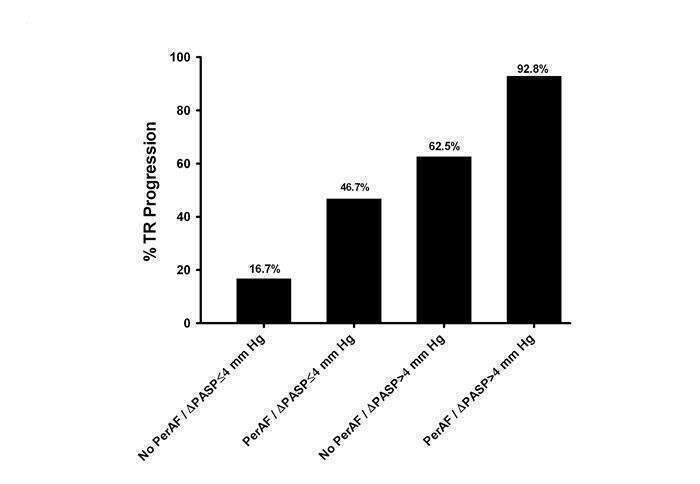Background: Tricuspid regurgitation (TR) is associated with heart failure and decreased survival. Data on risk factors for TR progression are limited, and were focused mainly on patients with rheumatic heart disease (RHD) after mitral valve surgery. The aim of this study was to determine the risk factors for TR progression in a contemporary population of patients referred to echocardiography.
Methods: In a case-control study, we compared 100 consecutive patients with TR progression on serial echocardiograms, (trivial or mild TR on the first echocardiogram and moderate or severe functional TR on a follow-up echocardiogram) with 100 patients matched for age and gender, having mild TR at baseline and no TR progression.
Results: Mean age was 72±10 y, 55% were males, and time to TR progression was 5.3±2.9 y. Less than 10% had RHD. Left ventricular ejection fraction (LVEF) was preserved (≥50%) in 85% of the TR progression group and 74% of the control group (p=0.06). Pulmonary artery systolic pressure (PASP) increased from 41±16 to 56±18 mmHg in the TR progression group and decreased from 44±13 to 41±11 mmHg in the control group (p<0.0001). Independent risk factors for TR progression were PASP change during follow-up (OR per 1 mmHg 1.14, 95% CI 1.06-1.23, p<0.0001), permanent atrial fibrillation (PerAF) (OR 14.3, 95% CI 4.6-44.2, p<0.0001) and coronary artery disease (OR 5.7, 95% CI 1.4-22.8, p=0.015). All-cause mortality at 3 years was 20% for patients without TR progression, 42% for moderate TR and 63% for severe TR, p<0.0001. Progression to severe TR independently predicted subsequent mortality.
Conclusions: In patients with low prevalence of RHD and preserved LVEF, PASP increase and permanent AF were the most powerful risk factors for TR progression. Progression to severe TR was an independent predictor of subsequent mortality.
Association between PerAF, ΔPASP and TR progression


